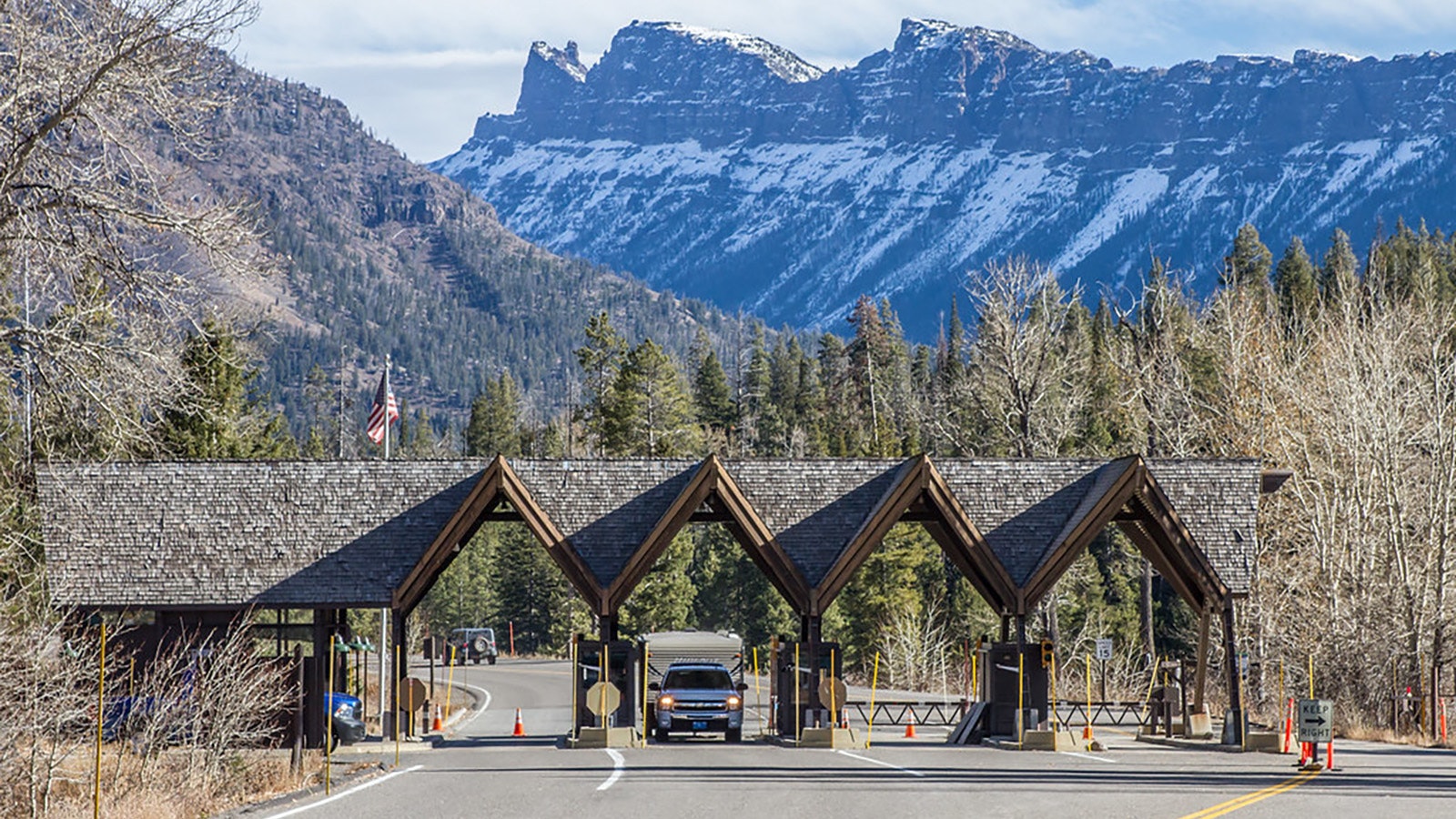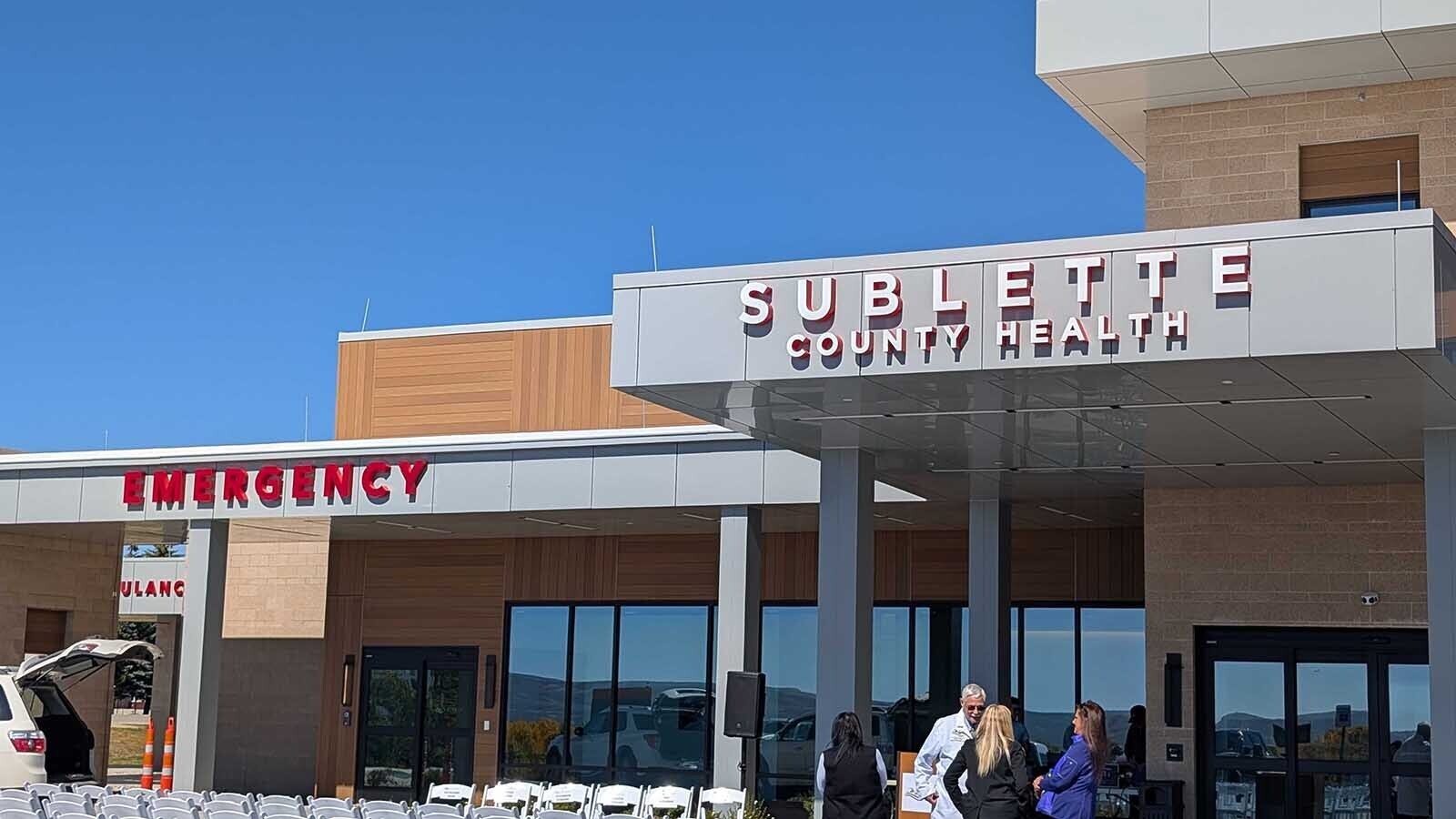Yellowstone’s tourist season has always had a strong core of summer tourism. But the national park has been expanding into its pre- and post-rush “shoulder” seasons, and they’re getting robust.
These shoulder seasons are becoming increasingly busy and important for Yellowstone and its gateway communities. The busy season, usually between late May and August, has stretched into April, September and October.
In recent years, the Wyoming Office of Tourism has been allocating more resources promoting Yellowstone’s shoulder seasons rather than the juggernaut of the peak summer season. That, along with some help from the COVID-19 pandemic and patiently waiting Baby Boomers, October visitation is growing without sacrificing the feel of Yellowstone in fall.
October’s Always Been Here
Cody has many unique challenges as a gateway Yellowstone community, given its 52-mile distance from the park's East Entrance, which is closed to all but snowmobiles during the winter season. Yet even here, October has become busier and consistently profitable for many businesses.
“Thirty years ago, the summer season was mostly over at the end of August,” Tim O’Leary, chief financial officer for Blair Hotels in Cody, told Cowboy State Daily. “But then September started building and building and became one of our strongest months of the year. Now, it’s trickling into October. It’s not as strong as September, but it's still a good month, fairly busy with high occupancy.”
Scott LaFevers runs 307 Outfitters, a business that leads summer pack trips and hunting adventures throughout the region near the East Entrance. 307 Outfitters doesn’t work inside Yellowstone, but LaFevers says the impact of the growing October shoulder season is evident.
“You go by the Ponderosa Campground (an RV park near Yellowstone), and it is three-fourths full. Normally by October, it was empty,” he said. “It extends the season of the outlying communities.”
Alvin Heggie owns Cody Shuttle, which offers curated and often personalized tours throughout Yellowstone. The company’s October schedule was fully booked well before the end of September.
“We’re busy throughout the entire season, but as it gets later into September and October, the visitation is near endless,” he said.
Heggie sees several reasons why October is growing as a popular month for a Yellowstone visit: smaller crowds, less erratic weather than springand kids going back to school. But the overall appeal of an October in Yellowstone is one anyone who lives near the park implicitly knows. But Heggie said that secret’s out.
“I think October’s always been here. People are just figuring it out,” he said.

Caused By COVID
Nearly everyone noticing and benefitting from the growing momentum of October tourism cites the same starting point for the change: the COVID-19 pandemic.
“Especially since COVID,” O’Leary said. “I would say in the last three years, (October tourism) has grown quite a bit. We’re still getting some of that COVID effect where people wanted to get out and start exploring the outdoors, and I think that’s just trickled over.”
LaFevers said the pandemic has contributed to an overall interest in hunting and backcountry exploration, and October is just another month where those services are available without too many problems with weather.
“I think there’s been a lot more interest in all things backcountry since COVID. It’s exploded the recreation industry,” he said. “I think people that used to come in September have shifted to October, and families are staying longer in September. People, in general, want to stay out more.”
A Baby Boomer Boom
One common observation of the tourists in the park in October is that most are from one generation. Baby Boomers have the time and resources to make shoulder season trips, and more of them are starting to do so.
“It’s an older group that’s coming in September and October. You’re getting more and more of the Baby Boomers retiring, and more of them have time on their hands to come (to Yellowstone.),” O’Leary said.
Cody Shuttle works with groups of all ages and nationalities. Heggie agrees that specific demographics dominate the new surge of October tourism in Yellowstone, but it’s more than domestic travel driving the trends.
“U.S. travel for sure, 100%, the majority are seniors and empty nesters,” Heggie said. “But there is a genuine population of foreign travelers in the spring and fall shoulder seasons, which tend to be a little younger. That population has endless potential for growth.”
Heggie thinks more people are tapping into their patience to cultivate an ideal Yellowstone experience without the frustration of overwhelming crowds and punishing heat during the summer.
“Those who can choose to wait generally do choose to wait until after the crowds have gone down,” he said. “Traffic adds to the length of time and the number of attractions you can see in the day. It’s much easier in the fall, especially in late September and early October. That makes it a lot more attractive to older folks who don’t have kids.”

Demand Vs Capacity
One unavoidable fact is that, despite the growing demand for a Yellowstone experience in October, the park and its gateway communities can only accommodate so much. Demand is already exceeding capacity.
For LaFevers and 307 Outfitters, the priority in October will always be hunting season. Their staff and resources are already allocated, but LaFevers knows there are many opportunities he must leave behind.
“We’re getting more requests for rides and stuff in the fall. We just don’t have the animals and the staff to do it and still hunt,” he said. “Other outfitters that operate within the park tell me their business is still really heavy with fishing and other things.”
Hunting season is paramount in Wyoming, and the season is the bread and butter for businesses like 307 Outfitters. But even here, LaFevers says there’s a high demand curtailed by capacity.
“In our unit, we have a limited number of licenses. But there is a lot more interest in those licenses,” he said.
Cody Shuttle has a similar problem, but it is a good one for a tour business to have. Heggie said the only limits on the company’s October business are the ones he sets himself.
“As soon as we open our door and the park opens, we’re full,” he said. “We could book as many people as we have room for, and we have. The only question we have in October is whether we want to get bigger and take more.”
Don’t Despair
The idea of more people perpetually moving through Yellowstone and the gateway communities from April through October sounds like a nightmare for many people who moved to the Yellowstone region specifically to avoid crowds. The park’s shoulder seasons have always been seen as the time when locals can enjoy the atmosphere without the crowds.
The good news is everyone who sees the enormous potential of the October shoulder season also sees the factors that will keep the potential contained.
For one thing, nobody expects the shoulder season of October to extend through the whole month. While Cody hotels still see high occupancy, O’Leary says the first weeks of October account for most of the business they receive for the entire month.
“My experience is October is getting busier all the time,” he said. “But October’s not as strong as September. It stays busy throughout the middle part of October. Then, it starts tapering off. You could see the September business growing year over year. I’m not so sure that’s taking place in October.”
O’Leary finds new enjoyment in the latter half of October before the East Entrance closes but after the momentum of tourist travel starts ebbing away.
“When I’m in the park, the roads have been busier the first couple weeks of October. Then, it starts to slow down. The last couple of weeks of October are very enjoyable until they close the (East) Gate.”
Heggie has discovered that Yellowstone’s capacity is limited in October, which limits how many people visit the park. As the park’s hotels, general stores and gas stations close for winter, people look outside the park for their vacation amenities.
“Yellowstone can cube itself out in terms of park concessionaires and tour operators,” he said. “After Labor Day, some park services and facilities in the gateway towns close and their offerings are reduced. It’s less of a sure thing when you visit Yellowstone (in October) that you’ll have access to whatever services you like on your vacation.”
Even with the growing interest in October, Heggie said there is still a sanctity to the park. The number of visitors is increasing, but Yellowstone still feels empty.
“You nearly have the park to yourself sometimes. In the fall, it’s a whole lot easier to see everything,” he said.
October in Yellowstone will never be July or August. The capacity of the park and its gateway communities will always be an intractable barrier to tourism, no matter how high the demand for a robust shoulder season might go.
But in Heggie’s experience, there’s a strong future in October. The critical question is how much the park, its gateway communities and theirbusinesses want to accommodate it.
“I can say with great certainty — the season doesn’t matter,” he said. “Whether it’s the spring shoulder season, the summer peak season, or the fall shoulder season, pick a number of people you want to service on a given day, and you will fill that up. It’s not an endless demand, but it’s near endless. And that very much includes October.”
Andrew Rossi can be reached at arossi@cowboystatedaily.com.





